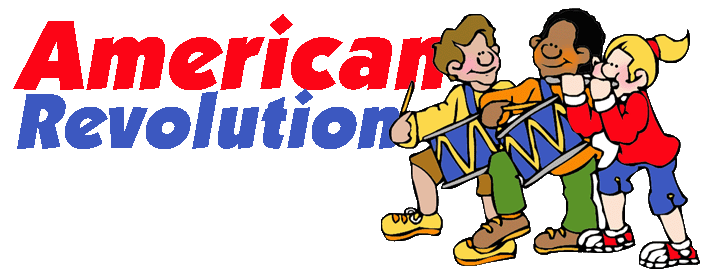For Teachers
Lesson 11: Colonial Life during the war
Not everyone was in the army, or the militia. Most people just wanted the fighting to end so that they could get back to normal lives. What was a normal life like during the war?
Think about your own life. What did you do yesterday? How about today. How does your day start? Did someone wake you up or do you have an alarm clock. Did you get a shower this morning? What did you have for breakfast yesterday? Today? did you walk to school, rid your bike, take a bus or get a ride? What are you doing after school? Do you have any chores to do?
(Teacher) Have students either alone or with a partner make a list of what they do during a normal day, then what they do on a weekend or holiday.
Ask them what they think that children their age did in 1776. Take all answers and make a list for the overhead or document camera, or whatever you use. Now direct them to this website, which includes interactive online games, or give them this to read if you do not have access to computers in class or in a computer lab.
Food: Most colonists ate well with a large variety of food items available. Storing food was a problem (no refrigerators or freezers) so a lot of food was salted, pickled, dried, smoked or canned (not in a can like we know, but in a glass jar; this is called canning),
Clothing: Most people made their own clothing. (Actually women or girls made clothing for the whole family.) Since fabric was expensive most people only had one or two changes of clothing.
Housing: By today's standards housing was quite cramped. All the children usually sharing one bedroom, and remember, colonial families were usually large by our standards today.
Transportation. To get where you were going, school, store, work, most people walked. If you were going on a longer trip, say more than about 5 miles, you had to either ride a horse, use a carriage, or go by boat. There were no cars, trains, airplanes, motor scooters, or motors of any kind. There was only muscle power, either human or animal.
Games and Toys: Girls were given dolls that were usually made from the leftover material from making clothing. Boys (and girls) other toys were usually carved from wood and included bullroarers, tops, cup and ball, and jacob's ladder. Children also played card games.
Education: Most children learned to read and write, but usually quit school and started working around age 8 - 10. Children of wealthier families might go on to get a formal education and even go to university.
Music: Music was very important to the colonists. Much of the music was religious, however popular music and tunes spread rapidly throughout the colonies. Being able to play an instrument or sing was a very respected talent. The harpsichord was popular as were other stringed instruments.
Government: Each of the colonies had their own government. Each city and town also had a local government. People did not have much to do with government unless it was to pay a tax. The Continental Congress was made up of representatives from all 13 colonies and, while they talked a lot and tried very hard, they didn't have much real power.
Have your students pick one of the sections (or you may assign a group one topic and have them compare it to what we have today.

